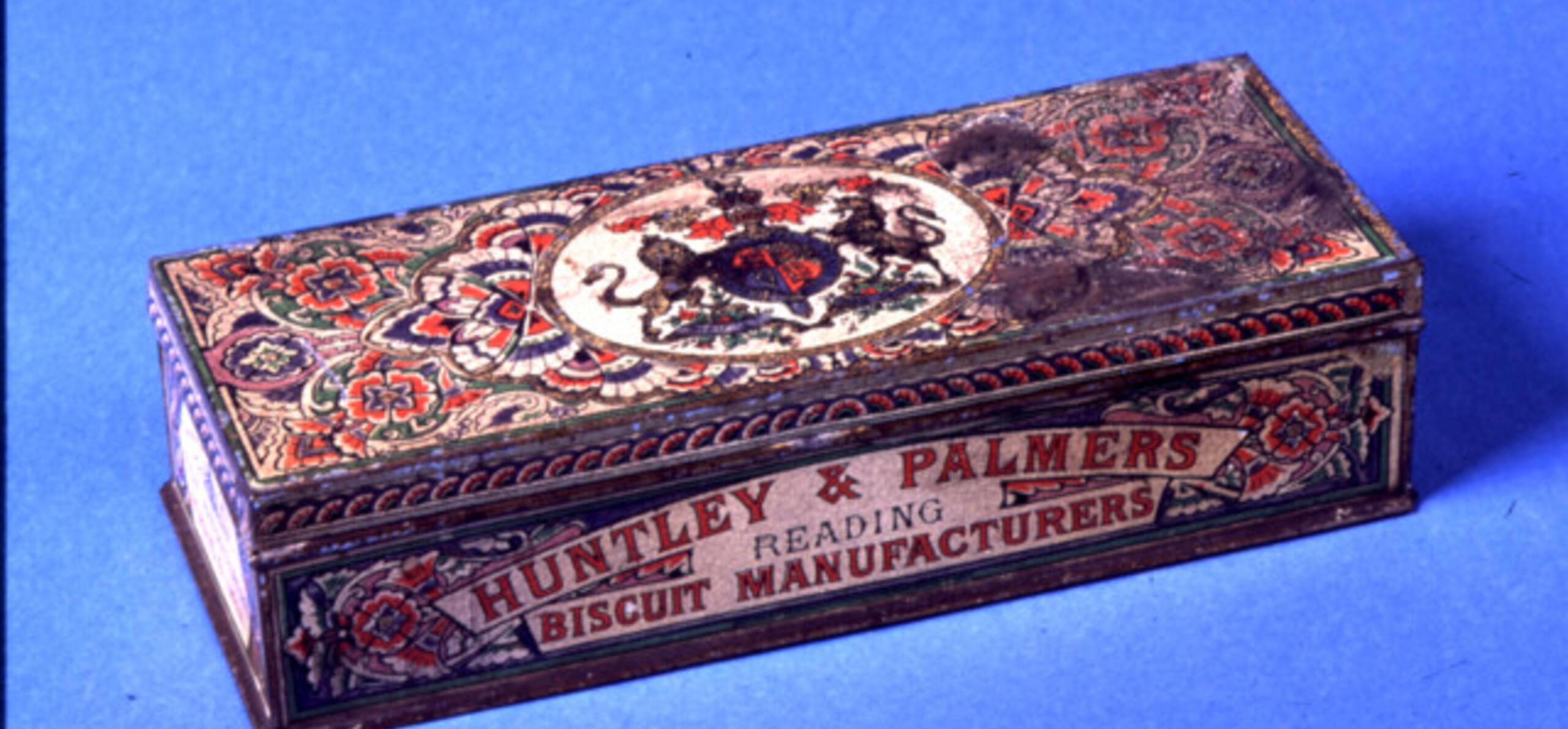Huntley & Palmers biscuit tins were as highly prized as the products they contained and today they are collectors items. From miniature replicas of vehicles to tins that could be re-used as household objects, there were no limits to their ingenuity. However the tins were originally created for a more practical use - the airtight storage of biscuits so that they could be transported to distant customers and stay oven-fresh and unbroken.
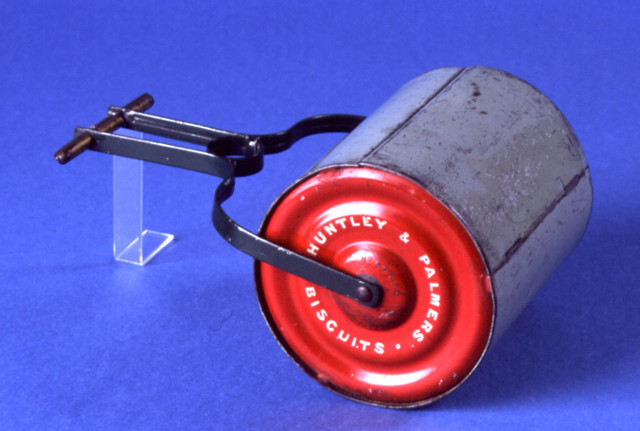
This Garden Roller tin from 1913 is an excellent example of the fashion for tins which imitated other objects. Made by Huntley Boorne & Stevens of Reading in the early twentieth century, it opens from the middle of the barrel. (REDMG : 1982.101.13)
The founding of Huntley, Boorne & Stevens
Joseph Huntley used the position of the bakery on the busy London to Bath road to his advantage and the shop quickly developed a good name with hungry coach travellers. The potential to sell biscuits further afield was soon realised and in 1832 Joseph Huntley's younger son, also Joseph, began making tin boxes in his ironmonger's shop which stood opposite the London Street bakery.
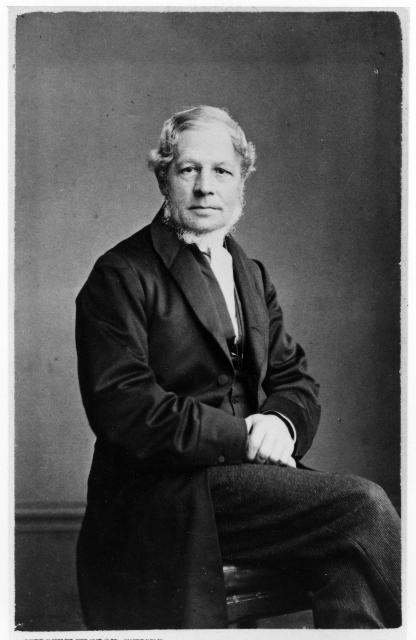
This photograph of Joseph Huntley was taken between 1869 and 1895 by photographers Sydney Victor and Ernest White at Talbot Lodge, 85 Castle Street.
The first tins
The first tins to be made were large, square, 10lb tins which Huntley & Palmers then labelled. These were made by hand and cut from standard-sized sheets of tinplate weighing 115lb. A trained box maker could make about a hundred per day and it was not long before demand outstripped supply.
Huntley & Palmers also made square 7lb shop display tins with glass lids. The biscuits were then sold directly from the tins and the grocer would weigh out the required quantity of biscuits into a paper bag.
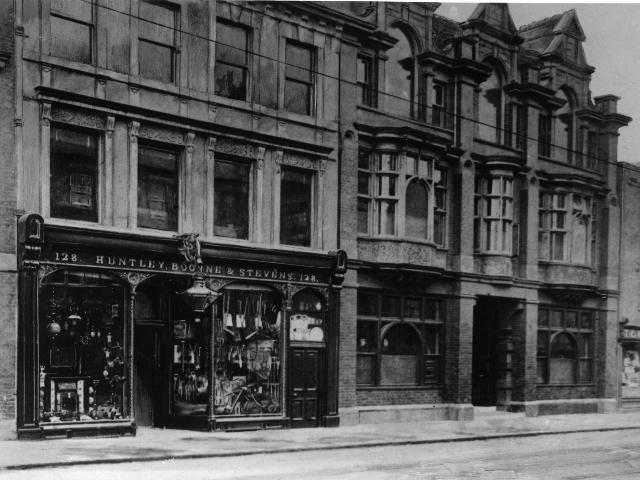
This photograph shows the company's ironmongers shop and the visitor's entrance to the offices and tin works. The shop closed in 1912 as it was considered uneconomic and major alterations were made to the buildings. (REDMG : 1998.30.1)
Not quite square
When Huntley & Palmers began to use the railways to transport their biscuits, they found that the square tins did not fit well into the Great Western Railway's goods carriages. Later versions of these tins were produced with one side slightly longer than the other in order to fit in the carriages.
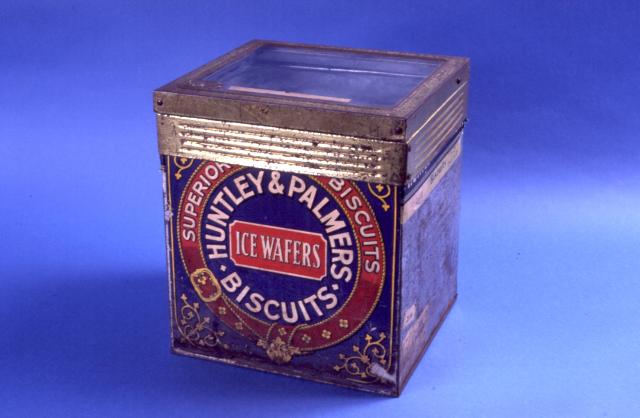
The tins had glass lids so that the customer could see the biscuits inside. (REDMG : 1998.1.89)
Garter and buckle
The garter and buckle trade mark was devised in 1851 by Owen Jones. This design became the distinctive mark of Huntley & Palmers and was recognised throughout the world. The Iced Wafer shop display tin above bears this trade mark.
Huntley & Palmers' designs were often breathtaking and extravagant. Next, learn about how they printed them.
